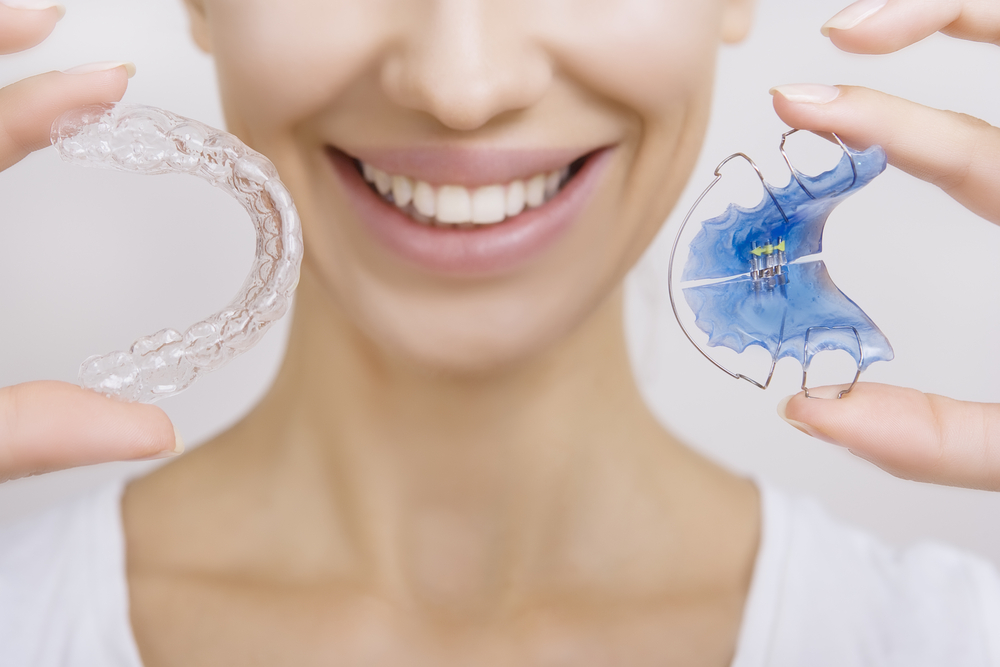After a long journey of orthodontic treatment, you’ve finally reached the end and your teeth look great. But the journey doesn’t end when the braces come off or the aligners are finished—wearing a retainer is a crucial part of maintaining your new smile. Many people underestimate the importance of wearing their retainer, only to regret it later when their teeth begin shifting back to their original positions. In this blog, we’ll explore what happens if you neglect your retainer, why it’s essential, and how to stay on track with your orthodontic results.
In This Blog:
- Types of Retainers
- Why Retainers are Essential
- The Consequences of Not Wearing Your Retainer
- How Long Should You Wear Your Retainer?
- What to Do If You Haven’t Worn Your Retainer
- Tips for Keeping Up with Retainer Wear
Types of Retainers
There are several types of retainers, each with its own benefits and considerations. The right one for you depends on your orthodontic treatment, lifestyle, and personal preference. Here’s a breakdown of the most common types of retainers:
Hawley Retainers (Removable)
A Hawley retainer consists of a metal wire that wraps around the front teeth and an acrylic base that sits against the roof of your mouth or behind your lower teeth.
Pros:
- Durable and long-lasting.
- Can be adjusted if minor shifts occur.
- Easy to clean.
Cons:
- More noticeable than clear retainers.
- May take time to get used to speaking with it.
Clear Plastic Retainers (Essix or Vivera Retainers – Removable)
Made of clear, molded plastic, these retainers resemble Invisalign aligners and fit snugly over your teeth.
Pros:
- Nearly invisible, making them a discreet option.
- More comfortable than Hawley retainers.
- Prevents minor teeth movement if worn regularly.
Cons:
- More prone to cracking or wearing down over time.
- Cannot be adjusted if teeth shift.
- Needs regular replacement, typically every few years.
Fixed (Bonded or Permanent) Retainers
A thin metal wire is bonded to the back of the lower or upper front teeth, keeping them in place permanently.
Pros:
- No need to remember to wear it.
- Provides continuous retention, reducing the risk of relapse.
- Invisible from the front.
Cons:
- Can be harder to clean around, requiring special flossing techniques.
- May need replacement if the wire comes loose or breaks.
Which Retainer is Best for You?
- If you want a durable, adjustable option: A Hawley retainer may be the best choice.
- If aesthetics are important: A clear plastic retainer offers a nearly invisible look.
- If you don’t want to worry about remembering to wear it: A fixed retainer provides constant retention without daily effort.
Regardless of the type, consistent use and proper care are essential to keeping your teeth in their ideal position. Your orthodontist will recommend the best retainer for your needs and lifestyle.
Why Retainers Are Essential
Your teeth naturally tend to move over time due to various factors, including the pressure from chewing, aging, and even daily habits. A retainer helps stabilize your teeth in their new position after orthodontic treatment. Without it, the ligaments and tissues around your teeth may gradually pull them back toward their original misalignment, a process known as orthodontic relapse.
Retainers provide the support your teeth need to remain straight. Whether you have a fixed (permanent) or removable retainer, wearing it as instructed by your orthodontist is key to maintaining your smile.
The Consequences of Not Wearing Your Retainer
Teeth Shifting and Misalignment
One of the first things you’ll notice if you stop wearing your retainer is that your teeth start to shift. This can happen sooner than you think—sometimes within weeks or months. The longer you go without wearing your retainer, the more your teeth will move, undoing the results of your orthodontic treatment.
Wasted Time and Money
Braces and clear aligners require a significant investment of time and money. Failing to wear your retainer as directed can mean all that effort goes to waste. If your teeth shift enough, you may need to undergo orthodontic treatment again—leading to additional expenses and another round of discomfort.
Bite Changes and Jaw Discomfort
Misaligned teeth can lead to changes in your bite, causing discomfort and even jaw pain. If your bite becomes unbalanced, it can put extra strain on your jaw joints, potentially leading to temporomandibular joint (TMJ) disorders.
Increased Risk of Dental Issues
When teeth shift out of alignment, it can create areas that are harder to clean, increasing your risk of plaque buildup, cavities, and gum disease. Straight teeth are not just about aesthetics—they also contribute to better oral health.
How Long Should You Wear Your Retainer?
Many people assume that once their teeth feel stable, they no longer need to wear their retainer. However, orthodontists recommend wearing a retainer for life to prevent relapse.
The general timeline includes:
- First 6 months: Full-time wear (except when eating or brushing).
- After 6 months to 1 year: Nightly wear.
- Long-term maintenance: A few nights per week for the rest of your life.
Since teeth can shift even years after treatment, consistent retainer use is key to keeping your smile intact.
What to Do If You Haven’t Worn Your Retainer
If it’s been a while since you last wore your retainer, here’s what to do:
- Check if it still fits: If it’s tight but still fits, try wearing it for short periods until your teeth adjust.
- Never force it: If your retainer feels too tight or doesn’t fit at all, don’t force it—you could damage your teeth.
- Consult your orthodontist: If your teeth have noticeably shifted, your orthodontist can evaluate whether a new retainer will work or if you need corrective treatment.
- Consider re-treatment: If shifting is severe, you might need orthodontic treatment again, such as clear aligners, to realign your teeth.
Tips for Keeping Up with Retainer Wear
Wearing your retainer regularly doesn’t have to be a hassle. Here are some tips to help you stay consistent:
- Make it a habit: Keep your retainer in the same spot every night to build a routine.
- Set reminders: Use alarms or smartphone notifications to remind you to wear your retainer.
- Keep it clean: Brush and rinse your retainer daily to prevent bacteria buildup.
- Store it safely: Always keep your retainer in a protective case when not in use to avoid losing or damaging it.
- Have a backup: If you frequently misplace your retainer, consider getting a spare one.
Conclusion
Skipping your retainer may seem harmless at first, but over time, it can lead to shifting teeth, bite problems, and even the need for more orthodontic treatment. To protect your investment and maintain your beautiful smile, commit to wearing your retainer as instructed by your orthodontist. If you’ve stopped wearing it and notice changes, don’t wait—schedule a consultation to explore your options. Your future self (and your smile) will thank you!
Would you like to learn more about retainer care or orthodontic treatment options? Contact your dentist or orthodontist today for expert advice.



